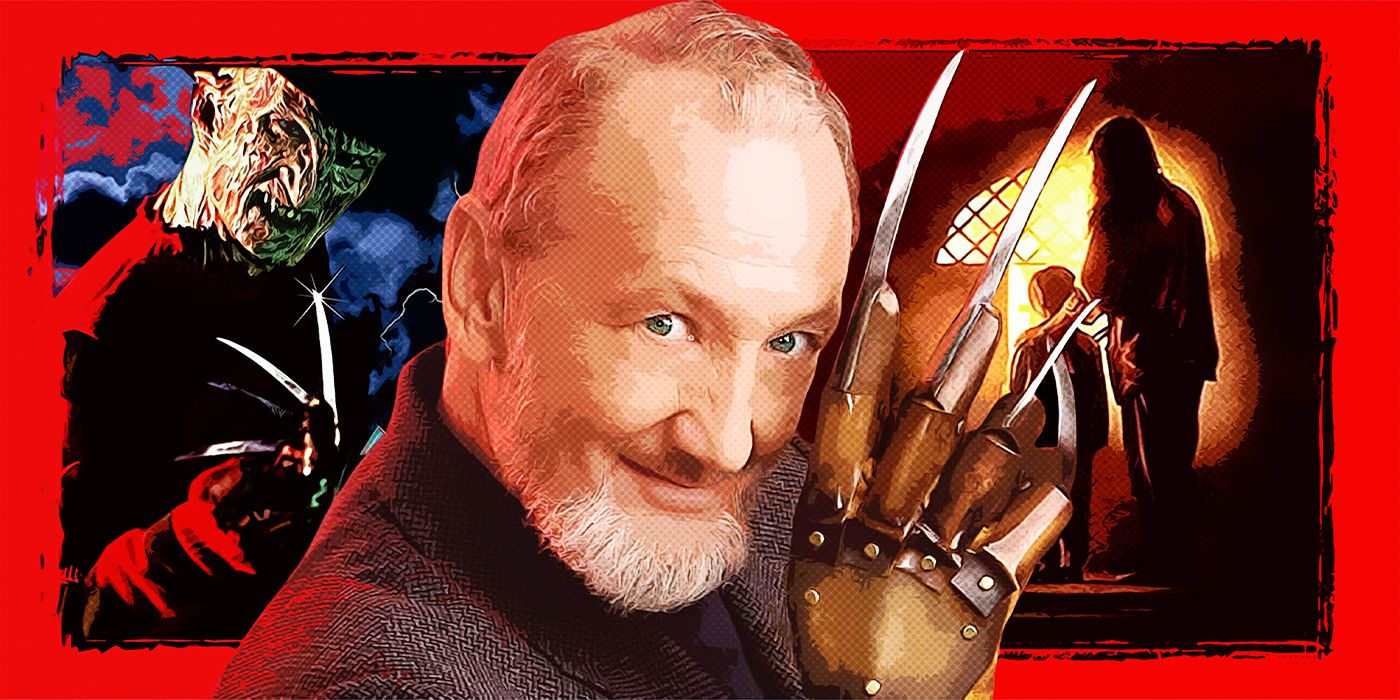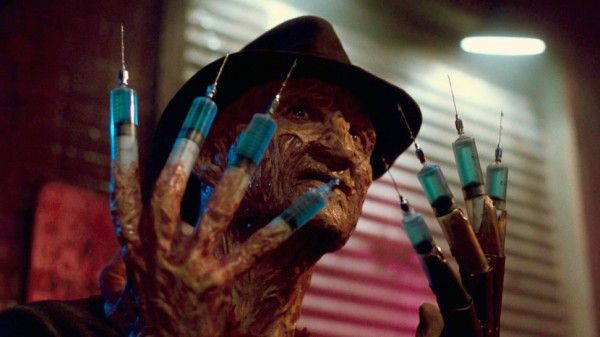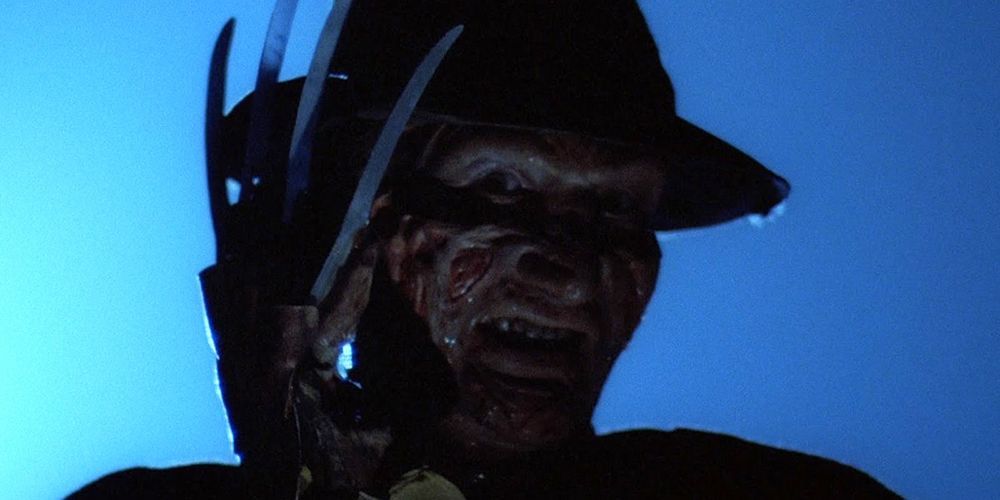The slasher flick is, for the most part, relatively straightforward. Big, silent, weapon-wielding forces of evil, unstoppable as they hack and slice their way through a cornucopia of young victims. The names still resonate today: Leatherface (Gunnar Hansen), Jason Voorhees (Warrington Gillette), Michael Myers aka 'The Shape' (Nick Castle). Though those names played the first incarnation of each killer, they didn't always.
Then came 1984’s A Nightmare on Elm Street, and it was a game-changer for the genre, introducing the world to its iconic antagonist, Freddy Krueger. Freddy wasn't big and menacing, but thin and terrifying. He certainly wasn't silent, opting to taunt and threaten his victims mercilessly (and humorously, especially as the franchise continued). Freddy didn't need to be in the house, in the closet, or in the cabin at summer camp - he found his prey at their most vulnerable moments: in their sleep. Freddy wasn't limited to the physics of reality. His fellow slashers needed to chase their victims, go through doors and walls, and evade objects and traps, but Freddy? Untethered to the real world, he could appear right in front of you, drag you down hallways without touching you, and shape-shift. Freddy Krueger, literally, was unlike any other cinematic killer to that point, and set the stage for the likes of Pennywise (Tim Curry/Bill Skarsgård) and Chucky (Brad Dourif).
But in order for this new take on the slasher to work, the character needed someone who could deliver a true menace, a vengeful spirit, an evil entity who delighted in evil deeds. Freddy needed Robert Englund.
Englund was born in 1947 in Glendale, California, began studying acting at the age of twelve, and won ten acting awards while in high school. After three years at California State University Northridge, he transferred to Oakland University in Michigan, training at the Meadow Brook Theatre, which was affiliated with the Royal Academy of Dramatic Art. Englund's classical training afforded him roles in theater for years, primarily in Shakespeare productions. His first foray into film was as a minor character in 1974's Buster and Billie. It would be nine years of minor television and movie roles before his big break came in the 1983 miniseries V, playing Willie, a mild-mannered alien Visitor that joins the resistance against his own people. With the public largely unaware of his work prior to the role, the perception of Englund as a meek, nerdy type was molded by his appearance in the miniseries. He then auditioned for the role of Freddy Krueger.
All of this - his classical training, his years of living hand to mouth, his assumed personal traits, the timing - created a perfect storm of actor and character.
Wes Craven had envisioned Freddy as an old man, initially auditioning older actors, but had also entertained Freddy as the standard big, hulking type, meeting with actor Kane Hodder, who would go on to play Jason Voorhees (who, fun fact, wore the Freddy glove that dragged Jason's mask down to hell in Jason Goes To Hell: The Final Friday). Englund’s take on the character changed those plans, impressing Craven so much in his audition that he dropped his preconceived ideas of Freddy, altering his vision to match what Englund brought to the table. What the two created together was so radically different from his V character that it was literally jarring for moviegoers at the time, who were unaccustomed to the depth of Englund's talent.
See, Englund's Freddy isn’t a monster, but rather a small predator, a serial killing psychopath that murdered several children when he was alive by hiding in the shadows, like a rat, ruled out as a threat by not drawing attention to himself until it was too late. In death, this Freddy is still that rat, but one that doesn't have to hide his murderous intent. His voice is a tool in his arsenal, with Englund's command of tone and inflection turning it into something menacing, tinged with a dark glee when toying with his victims. That gleeful touch would become more evident as the Nightmare franchise continued, with macabre one-liners a calling card of sorts for the character ("Welcome to prime time, bitch" is a personal favorite). Freddy is a master of the dream world, seemingly able to do and be anything within it. He is evil, simply for the sake and joy of being evil, seeking vengeance on the parents of Elm Street for putting an end to his twisted hobby.
Freddy's weapon of choice, the infamous razor blade glove, became an extension of the character, a seamless connection of man to his instrument of choice. This isn’t a machete, a chainsaw, or any other blunt, primitive tool for a blunt, primitive slasher. It is elegant, in a way, graceful, each blade waving slowly as he unveils it to his prey before striking. He delights in it, with Englund betraying a sense of pride and an anticipatory pleasure in how he is using it next. Interestingly, Englund has gone on record as saying he had finished watching the 1979 remake of Nosferatu the Vampyre just before landing the role, and you can see the parallels in how both he and German actor Klaus Kinski use their hands, fully in control at all times.
It's no secret that Englund loves the character, having played Freddy in (almost) all appearances of the character: sequels, television series, cameos and voice-overs. The lone exception, the 2010 remake of A Nightmare on Elm Street, proved just how ingrained the actor is with the character, virtually inseparable, with universal agreement that, despite giving it the old college try, Jackie Earle Haley's portrayal of Freddy pales greatly in comparison. As it would be for anyone trying to tackle the role, a role that is campy yet not at all campy, darkly witty but terrifying, of an era yet timeless. The role made Englund horror's elder statesman, leading to a multitude of positions in front of, and behind, the horror movie camera. His latest role is an appearance in the supernatural horror series Stranger Things' Season 4 as Victor Creel, the former owner of the haunted Creel House and current convict at Pennhurst Mental Hospital.
No word on how well Creel sleeps.



